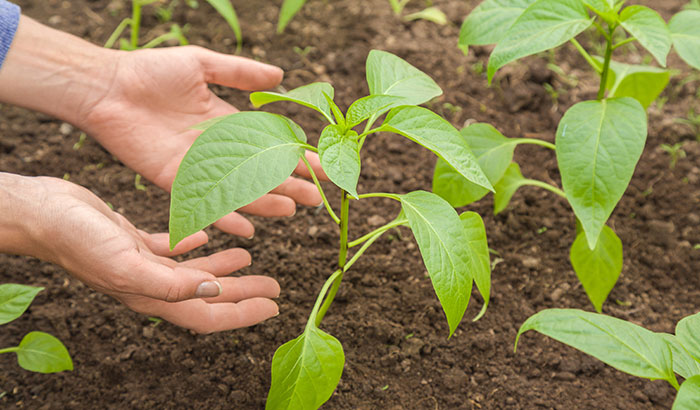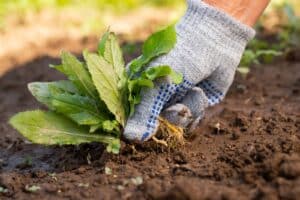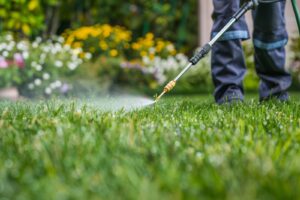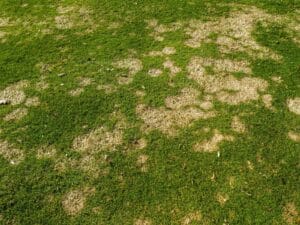Whether you’re starting a garden from scratch or arranging existing beds, you must first understand how to prepare the soil for planting.
Well-prepared soil is the foundation of any garden; healthy soil equals happy plants. Your plants cannot flourish without rich, soft soil that allows the roots to thrive and soak up nutrients.
No matter your skill level, garden size, or the season, we’re sharing everything you need to know about prepping soil to maintain a thriving garden.
Soil 101
Soil is important because it performs various crucial services for people and the planet. Soil puts food on our plates, provides a home for plants, purifies our water, protects the land from erosion, assists with weed control, helps prevent flooding, and regulates the climate. Since soil is so important, we must keep it healthy enough for planting.
Most roots grow in the top layer of soil (topsoil) where it is the most biologically active. The topsoil is responsible for producing 95% of the world’s food. This layer is where organic matter decomposes, earthworms aerate as they tunnel, nutrients are delivered to plants, water is absorbed, and sunlight pierces through to help aid the growing process. Improving your topsoil is the best way to boost plant health.
Below the topsoil, you’ll find the subsoil. This layer serves as a storehouse for moisture due to its thicker, clay-like composition. The subsoil also acts as a supporting base to the topsoil above. While this layer still contains nutrients, it is uninviting to most roots and organisms.
Determine Soil Health
As you learn how to prepare the soil for planting, you must first understand how to determine its health. Healthy soil supports plant roots and gives them access to vital nutrients. The soil must be dense but not too thick and loose, but still compact. Healthy soil can also retain water properly while effectively draining the excess.
Here are four tests that can help you determine whether your soil is adequate for planting:
- Use your hands – Take a scoop of soil and hold it in your hands. How does it feel? What does it look like? How does it smell? Healthy soil feels soft and sifts through your fingers. If it breaks instead of tearing, that is a sign that there might not be enough organic matter. Healthy soil also has a pleasant, earthy smell. If yours has no aroma or smells foul, you’ll need to improve its health.
- Check for earthworms – The more earthworms, the better. Take a shovel and examine how many earthworms you find living within the topsoil. If worms are scarce, that’s a sign that you need to boost your soil health.
- Use a skewer – For this next test, you’ll need a long skewer, rod, or stick that can poke through your soil. If you can push the skewer down easily, that signifies your soil has enough air pockets. The soil needs more air and water if the skewer breaks or becomes stuck.
- Infiltrate with water – As you prepare the soil for planting, you’ll need to check how well it absorbs water. Water that soaks in fast indicates healthy soil. If it takes longer than 10 minutes to absorb, your soil needs some work.
Improve Soil Health and Productivity
If your soil health tests suggest your soil needs some help, don’t worry! You can take plenty of steps to boost your soil’s health and effectiveness. Here are a few tips to help:
- Avoid walking on garden beds – Foot traffic is a quick way to compact and ruin your soil. Consider creating permanent garden beds and pathways to combat this.
- Don’t till – Tilling soil can cause it to blow away in the wind or wash away in a rainstorm, creating soil erosion. Instead, use a digging fork or a broad fork to loosen the soil without destroying microorganisms.
- Add mulch – Mulch covers the topsoil and helps insulate it from severe cold and heat. Mulches also help retain water, keep weeds away, and enrich the soil with organic matter as they slowly break down.
- Clear out weeds – You’ll need to clear out any weeds before planting a new garden each year. Weeds compete for light, space, water, and nutrients, so eradicate them as soon as they pop up.
- Use plant cover crops – Applying plant covers is a crucial step as you prepare the soil and improve its health. Cover crops protect the soil from water and wind erosion, help fight off weeds, raise soil organic matter levels, enhance biological activity, and more.
Prepare the Soil
Now that your soil is healthy, it’s time to prepare it with a few essentials. Since soil is important for numerous vital functions, you want to get this right.
- Air – Just like humans and animals, plants need air to function above and below ground. If your soil is too compact or spaced out, add organic matter to help balance the air supply. Additionally, avoid stepping in the beds or working in the soil when wet.
- Water – All organisms need adequate amounts of water for survival, and soil is no exception. Healthy soil has large and small pore spaces and is about 25% water. If your soil struggles to retain moisture, adding compost will help it store more water to use when plants need it.
- Fertilizer – Fertilizer is a quick and effective way to add extra nutrients to the soil. These nutrients directly affect plant growth and can bring your garden back to life.
Contact Summit Lawn & Pest Control
Now that you understand how to prepare the soil for planting, let Summit Lawn & Pest Control step in when you need help. We’re here to eradicate pests, take care of stubborn weeds, clean up your lawn, and help you enjoy your yard again. Our highly qualified technicians have the experience to make your yard the best-looking property in your neighborhood.
Contact us today to learn more! We serve the Utah County area.







